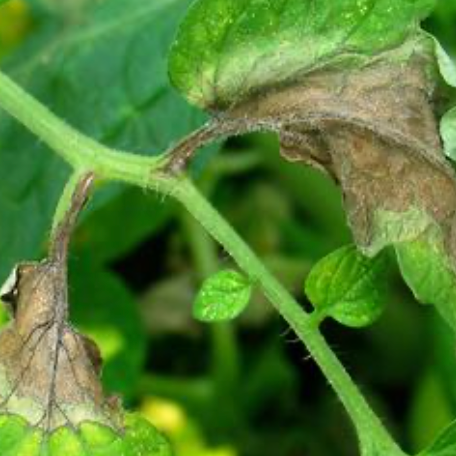
Late Blight Comes Early to New York

 Late blight on tomato leaf
Late blight on tomato leaf
Late blight is here, every year, but this year the blight has come on early and strong. Don't freak out and pull up all your plants; this is not quite the Irish Potato Famine. You should, however, know what to look for, keep an eye out, and act accordingly. Cornell University has recently put out some good info on the disease but their articles are not organically focused. You do not need to run out and buy chemical sprays. In fact, in most years, even infected plants produce plenty of good tomatoes. However, if you are desperate, copper sprays or a spray called "Serenade" can be used on non-infected plants (however, these can create imbalances in your soil if used too much). Alternatively, you can build any type of temporary roofing which keeps the rain off the plants and water the soil by hand or with drip tape. Our blight seems to be mild, not widespread, and our tomatoes and potatoes are staked, hilled-up, well spaced and planted in separate areas. We are currently doing careful pruning, not touching the plants when they are wet, and hoping for some dry days. How does this affect saving seeds? Luckily, blight is not a seed-borne disease. You can still save seeds from tomato plants with mild blight. Avoid saving seeds from the unhealthiest plants, just like you would with any of the plants in your garden.
I see sun today and sun in the forecast for the weekend. Let's hope things dry up a bit. In the meantime, I've created this list of articles, both from Cornell and other sources, so we can all be better educated about Late Blight and learn preventative, management, and aftermath best practices. Every new disease, pest, or adverse problem that comes into your garden is an opportunity to become a better gardener.
(The photo above and the text below are from the Cornell Resource Guide)
Late blight (potato, tomato)
Late blight is caused by a fungus-like pathogen (Phytophthora infestans) and is a serious disease of both potato and tomato, and is infamous as the cause of the Irish potato famine. It can quickly defoliate plants and cause fruit rot in tomato and tuber rot in potato. Spores are carried long distances in the wind and the disease can spread rapidly. The pathogen overwinters only in living plant debris, most commonly on seed potatoes or unharvested and cull potatoes in the Northeast. Imported solanaceous transplants including tomato and petunia may harbor late blight.
Cultural Control:
- Destroy cull potatoes and control potato volunteers in all fields.
- Use drip irrigation rather than overhead in order to keep the foliage dry. Alternatively, overhead irrigate early in the morning before dawn so the plants are dry early in the day. The key factor is to keep the period of leaf wetness to a minimum.
Materials Approved for Organic Production:
Copper products give fair to good control but must be applied often and thoroughly.
Here are links to articles with more information.
New York Times covers "Big Box Blight."






